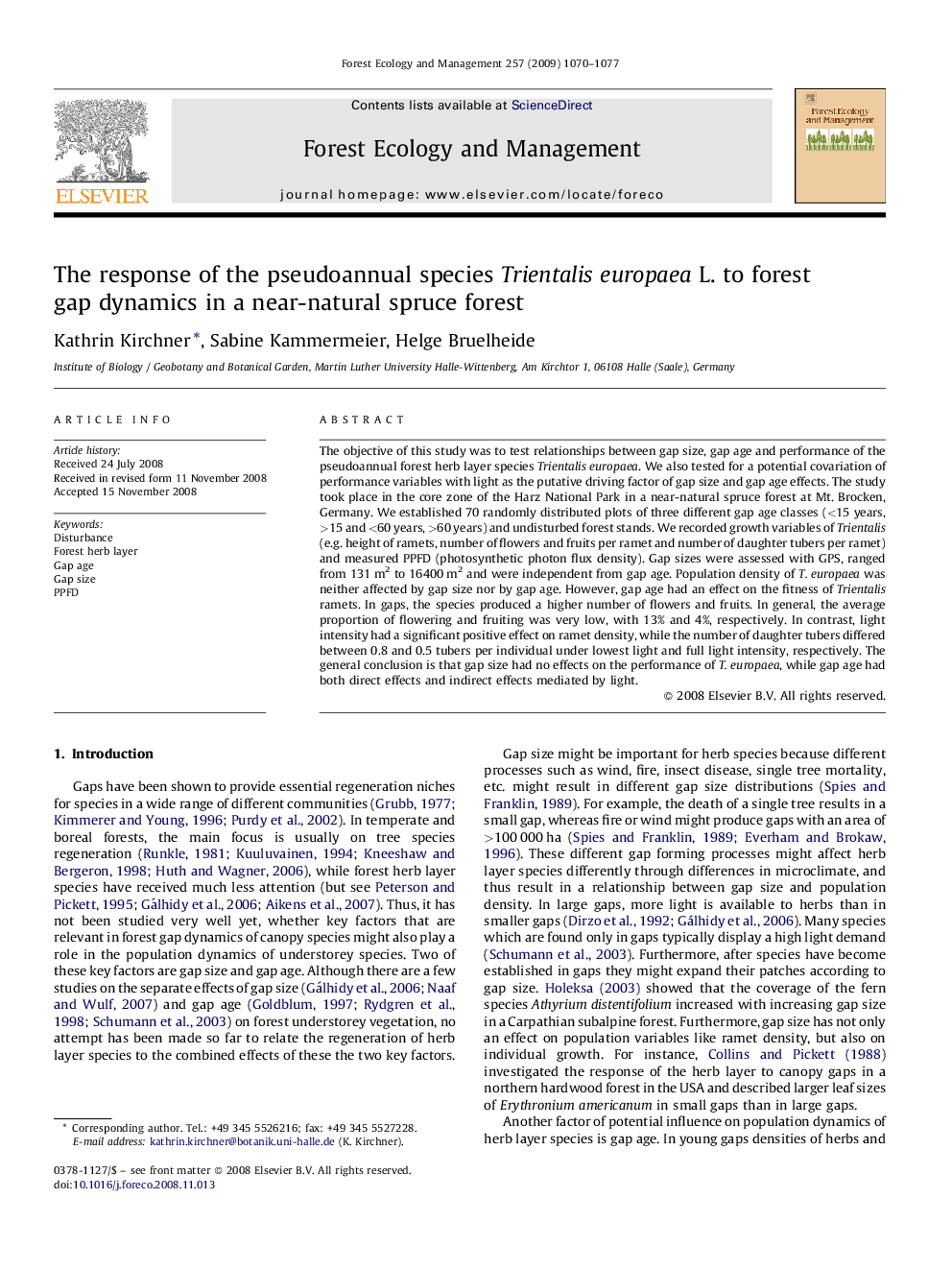| Article ID | Journal | Published Year | Pages | File Type |
|---|---|---|---|---|
| 89115 | Forest Ecology and Management | 2009 | 8 Pages |
Abstract
The objective of this study was to test relationships between gap size, gap age and performance of the pseudoannual forest herb layer species Trientalis europaea. We also tested for a potential covariation of performance variables with light as the putative driving factor of gap size and gap age effects. The study took place in the core zone of the Harz National Park in a near-natural spruce forest at Mt. Brocken, Germany. We established 70 randomly distributed plots of three different gap age classes (<15 years, >15 and <60 years, >60 years) and undisturbed forest stands. We recorded growth variables of Trientalis (e.g. height of ramets, number of flowers and fruits per ramet and number of daughter tubers per ramet) and measured PPFD (photosynthetic photon flux density). Gap sizes were assessed with GPS, ranged from 131Â m2 to 16400Â m2 and were independent from gap age. Population density of T. europaea was neither affected by gap size nor by gap age. However, gap age had an effect on the fitness of Trientalis ramets. In gaps, the species produced a higher number of flowers and fruits. In general, the average proportion of flowering and fruiting was very low, with 13% and 4%, respectively. In contrast, light intensity had a significant positive effect on ramet density, while the number of daughter tubers differed between 0.8 and 0.5 tubers per individual under lowest light and full light intensity, respectively. The general conclusion is that gap size had no effects on the performance of T. europaea, while gap age had both direct effects and indirect effects mediated by light.
Keywords
Related Topics
Life Sciences
Agricultural and Biological Sciences
Ecology, Evolution, Behavior and Systematics
Authors
Kathrin Kirchner, Sabine Kammermeier, Helge Bruelheide,
